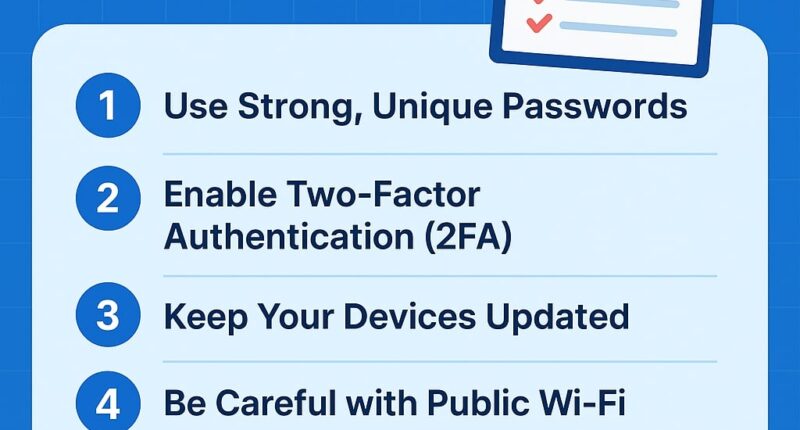In today’s hyper-connected world, our personal information is constantly at risk. From data breaches and phishing scams to identity theft and invasive tracking, protecting your online privacy is no longer optional—it’s essential. That’s why having a practical privacy checklist can help you take control of your digital security. Below, we’ll explore seven simple yet powerful steps you can take to secure your digital life.
Why Online Privacy Matters
The digital world offers convenience, but it also exposes us to risks. Cybercriminals, advertisers, and even apps collect personal data. Without taking the right precautions, your sensitive information—like bank details, passwords, and browsing habits—can fall into the wrong hands. By following a clear privacy checklist, you can safeguard your data and enjoy peace of mind online.
Step 1: Use Strong, Unique Passwords
Weak or reused passwords are a hacker’s dream. Always create strong, unique passwords for every account. Use a mix of uppercase letters, lowercase letters, numbers, and symbols. A password manager can help you generate and securely store complex passwords, so you never have to rely on memory alone.
Step 2: Enable Two-Factor Authentication (2FA)
Even the strongest password can be compromised. That’s where two-factor authentication (2FA) comes in. By requiring a second verification step—such as a code sent to your phone—you add an extra layer of security to your accounts. Always enable 2FA on email, banking, and social media accounts.
Step 3: Keep Your Devices Updated
Software updates are not just about new features—they often include critical security patches. Cybercriminals exploit outdated software to gain access to systems. Regularly update your operating system, apps, and antivirus software to close potential loopholes.
Step 4: Be Careful with Public Wi-Fi
Public Wi-Fi networks are convenient but risky. Hackers can intercept your data on unsecured networks. Avoid logging into sensitive accounts while on public Wi-Fi. For extra protection, use a virtual private network (VPN) to encrypt your internet traffic.
Step 5: Review App Permissions
Many apps request access to data they don’t actually need. Regularly check and limit app permissions on your devices. Disable unnecessary access to your camera, microphone, location, and contacts. This minimizes how much personal information you share unknowingly.
Step 6: Backup Your Data
Privacy and security also mean preparing for the unexpected. Regularly back up your files to a secure cloud service or external drive. In case of malware, hacking, or device failure, backups ensure you don’t lose valuable data.
Step 7: Stay Alert Against Phishing Scams
Phishing emails and fake websites are common tricks used by cybercriminals. Be cautious with unexpected emails, links, and attachments. Always verify the sender and double-check URLs before entering personal information. Awareness is your first line of defense.
Final Thoughts on Securing Your Digital Life
Protecting your online privacy doesn’t have to be complicated. By following this privacy checklist of seven simple steps, you can significantly reduce your risks and strengthen your digital security. Start small, stay consistent, and make privacy a priority in your everyday online activities.









